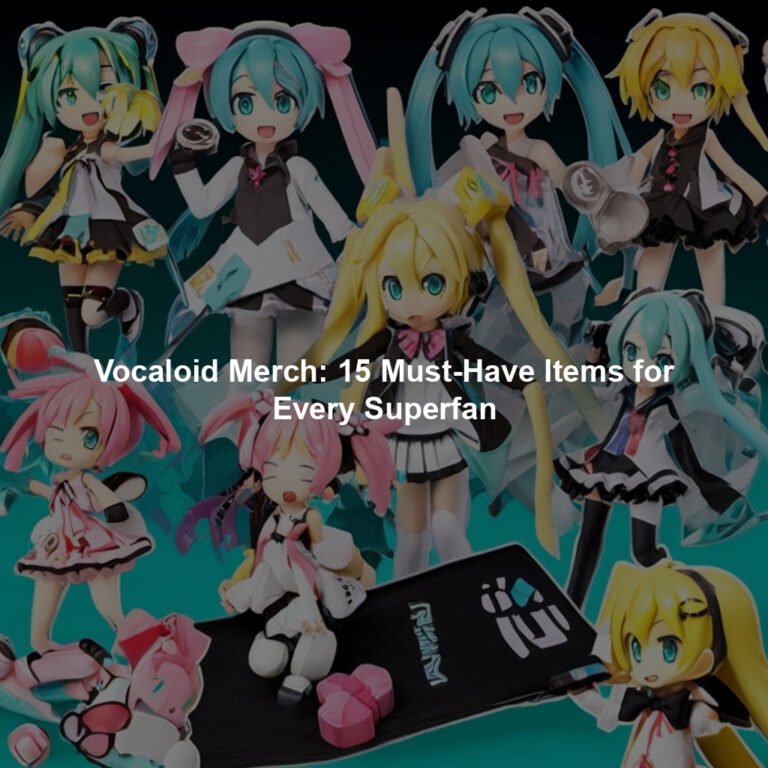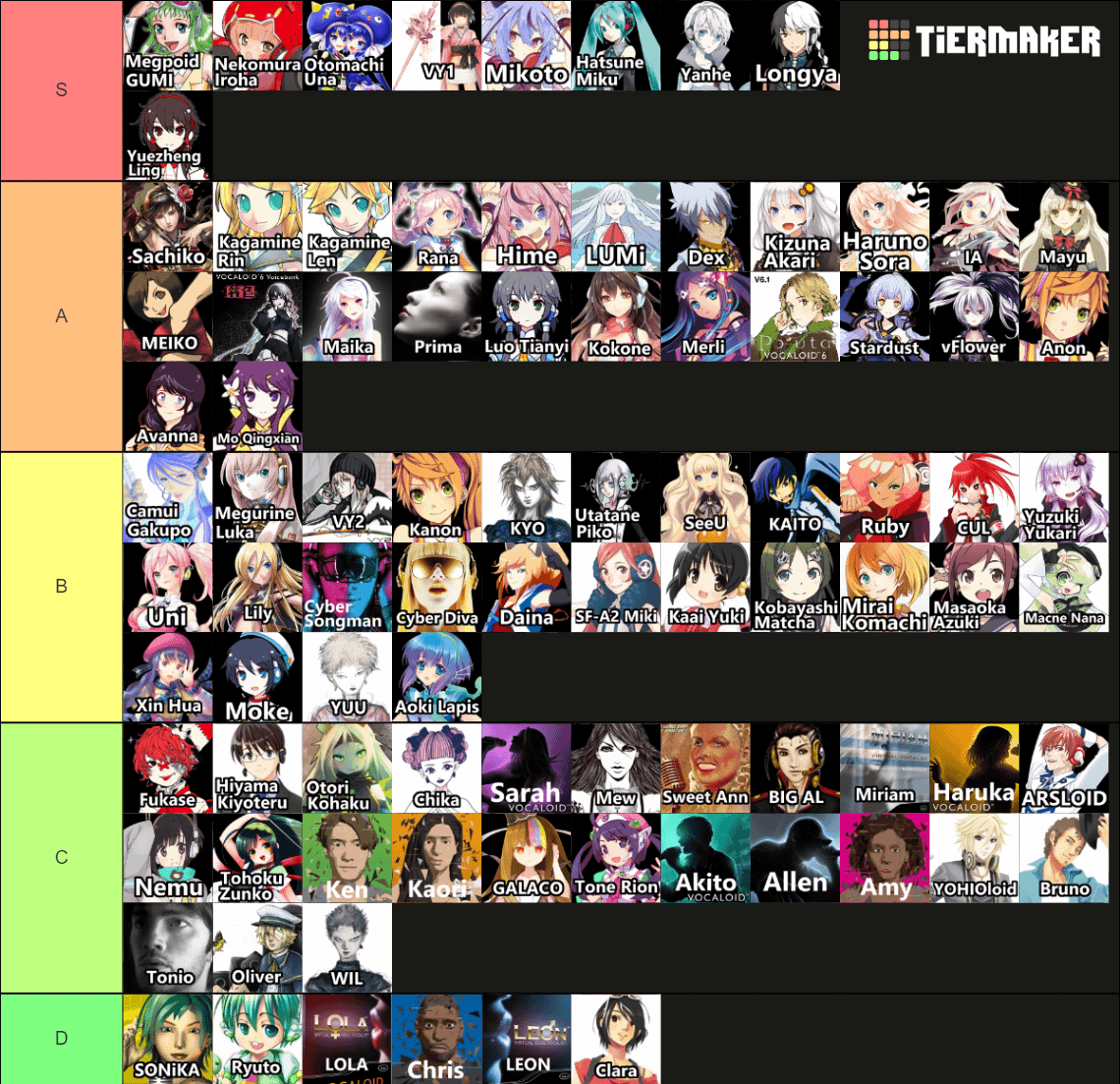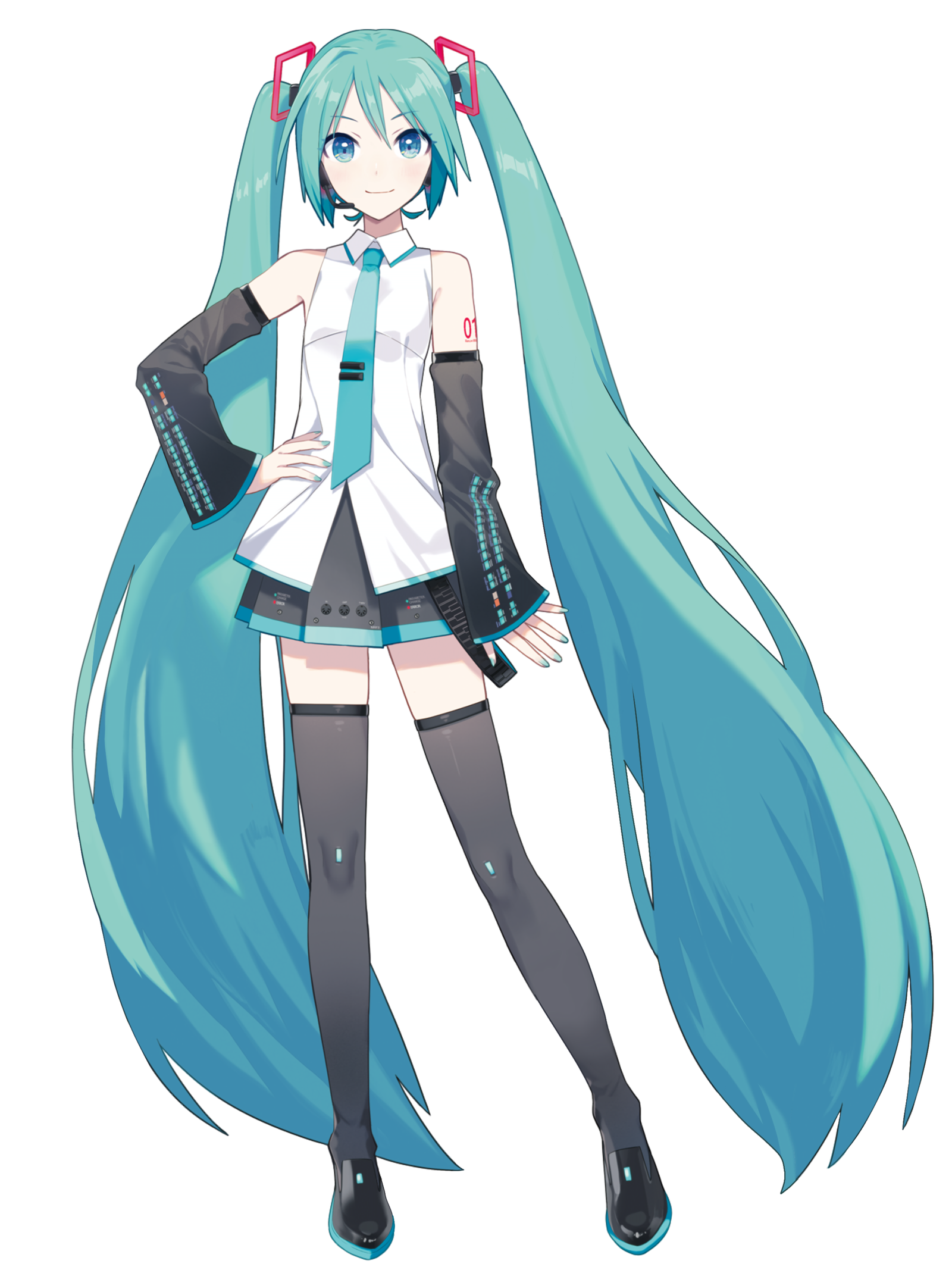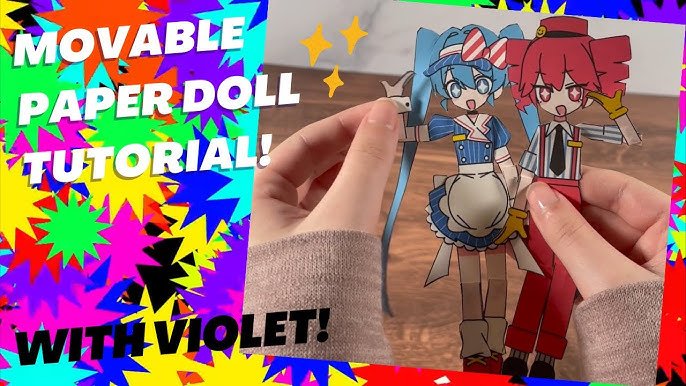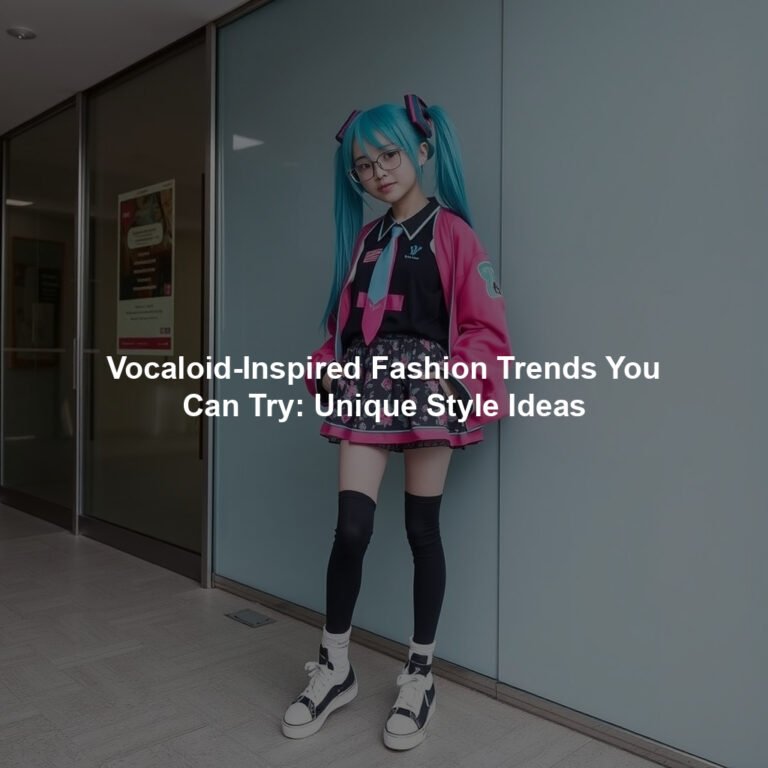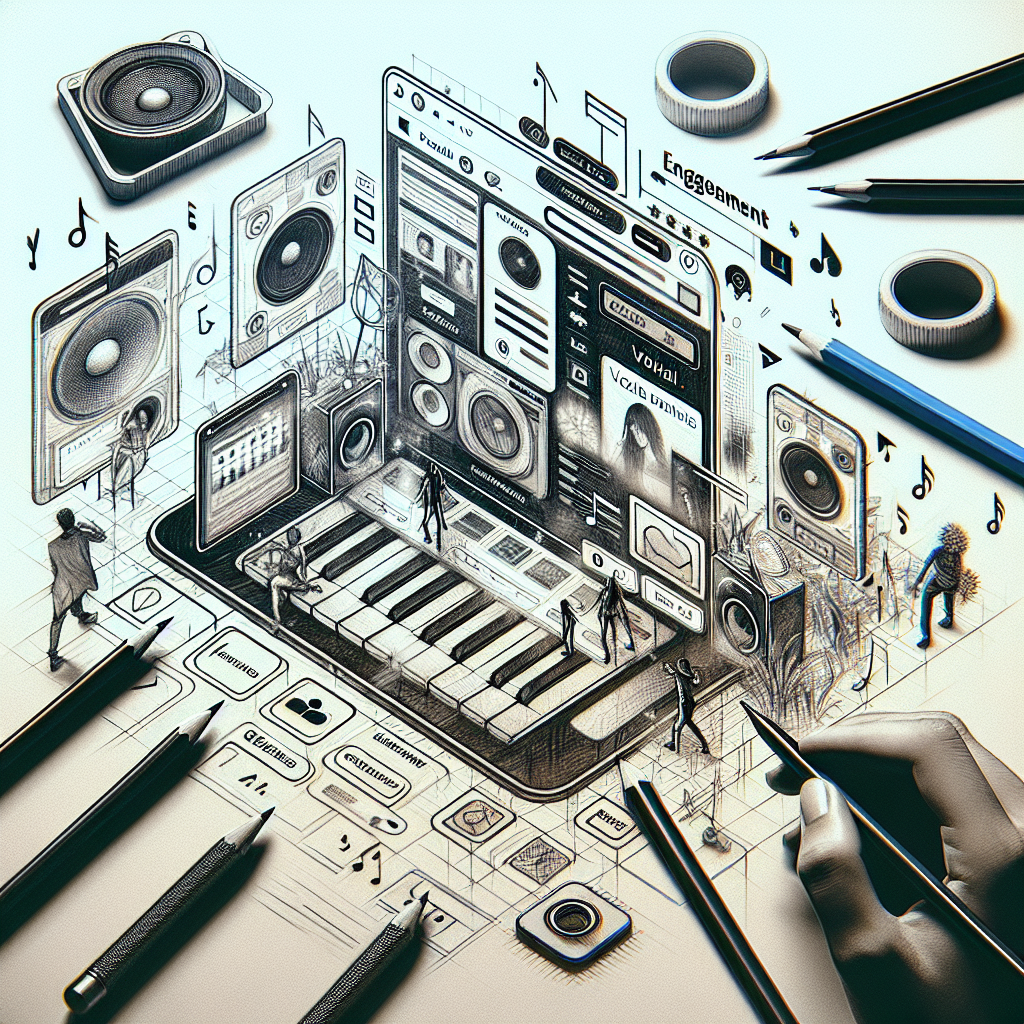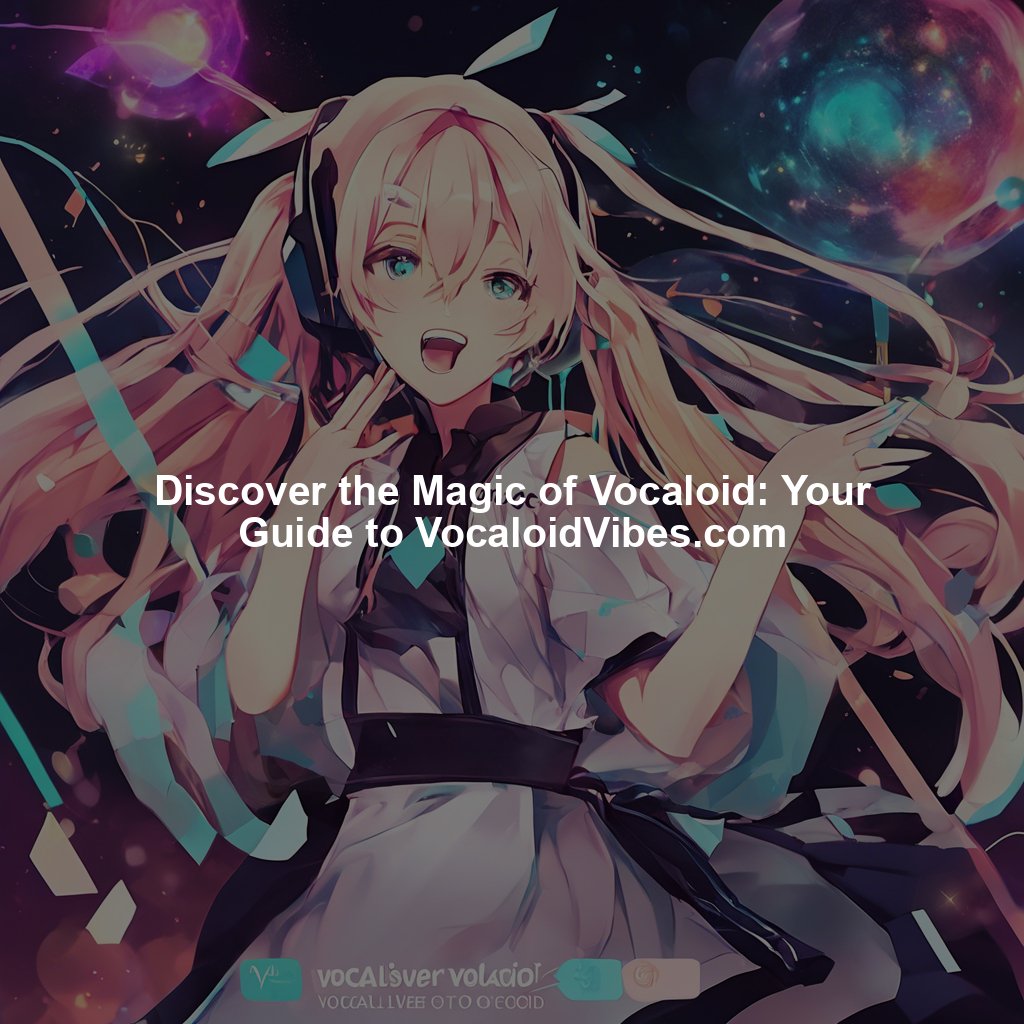Vocaloid is a singing voice synthesizer software. It allows users to create music with virtual singers.
Since its debut, Vocaloid has transformed the music world. The software provides endless opportunities for creativity. Users can craft songs with voices that sound almost human. The rise of Vocaloid has also birthed virtual idols. These characters have massive fan followings.
Fans create art, stories, and more based on these idols. Vocaloid’s community is vibrant and diverse. Musicians, animators, and writers all come together. They share their love for this unique tool. Whether you’re a music lover or tech enthusiast, Vocaloid has something for you. Dive into this fascinating world and explore its many layers.
What Is Vocaloid?
Vocaloid is a cutting-edge singing voice synthesizer software that allows users to create music with synthesized voices. Developed by Yamaha Corporation, Vocaloid enables users to produce songs by typing in lyrics and melodies. It has gained immense popularity in the music industry, particularly in the creation of J-pop and electronic music. But what exactly is Vocaloid?
Origins And Development
Vocaloid was initially conceived as a research project by Yamaha Corporation and Pompeu Fabra University in Barcelona, Spain. The primary aim was to create a vocal synthesizer that could generate human-like singing voices. The first version, Vocaloid 1, was released in 2004.
Over the years, Vocaloid has undergone several upgrades. Each version introduced significant improvements in voice quality and usability:
- Vocaloid 1 (2004): The debut version with basic singing voice synthesis capabilities.
- Vocaloid 2 (2007): Enhanced voice quality and user interface.
- Vocaloid 3 (2011): Improved voice modulation and support for multiple languages.
- Vocaloid 4 (2014): Advanced audio technology, including growl effects and cross-synthesis.
- Vocaloid 5 (2018): Comprehensive music production software with enhanced midi integration.
Each version brought the software closer to producing more realistic and expressive virtual singers. Today, Vocaloid is widely used in music composition and production, making it an essential tool for musicians and producers worldwide.
Key Features
Vocaloid stands out due to its impressive features that cater to both amateur and professional music creators. Here are some of the key features:
- Voicebank: A library of pre-recorded vocal samples from various voice actors and singers. Users can choose from different voicebanks to suit their musical style.
- Voice Modulation: Allows users to adjust the pitch, tone, and expressiveness of the virtual singer’s voice. This feature adds a human touch to digital voices.
- Midi Integration: Seamless integration with MIDI devices and software. This makes it easier to compose and arrange music.
- Singing Voice Synthesis: Advanced algorithms that generate lifelike singing from typed lyrics and melodies.
- Music Production Software: Comprehensive tools for editing, mixing, and producing music. This includes effects and filters to enhance sound quality.
These features make Vocaloid a versatile tool in the realm of digital music creation. Whether you’re composing a new song or experimenting with different vocal styles, Vocaloid offers a robust platform to bring your musical ideas to life.
Credit: www.reddit.com
Popular Vocaloid Characters
Vocaloid is a singing voice synthesis technology that has taken the music world by storm. Among its many features, the most captivating is its cast of virtual singers known as Vocaloid characters. These characters are digital personas with unique voices, allowing for endless music creation and vocal programming. Let’s explore some of the most popular Vocaloid characters that have captured the hearts of fans worldwide.
Hatsune Miku
Hatsune Miku is the most famous Vocaloid character. She is a virtual singer with a distinctive voice provided by the digital voicebank technology. Miku’s voice is created using singing voice synthesis, making her sound both unique and versatile. Her popularity stems from her vast range of songs and her iconic appearance.
Hatsune Miku Songs cover various genres, but she is most renowned for her contributions to Japanese pop music. Her voice can be heard in thousands of tracks created by fans and professional producers alike.
- Digital Voicebank: Miku’s voice is generated using advanced vocal synthesis technology.
- Vocal Programming: Producers can manipulate her voice for different effects.
- Music Production Software: Tools like Vocaloid software are used to create her songs.
Voice Modulation is another key aspect of Hatsune Miku’s appeal. Producers can adjust her pitch, tone, and other vocal elements to fit various styles and moods. This flexibility makes her a favorite in the music creation community.
Hatsune Miku’s influence goes beyond music. She has appeared in concerts, video games, and even commercials. Her holographic performances draw massive crowds, showcasing the power of digital voicebank technology. Miku isn’t just a virtual singer; she’s a cultural icon.
Other Notable Voices
While Hatsune Miku is the star, other Vocaloid characters also have significant followings. These characters contribute to the diverse world of Vocaloid music, each bringing something unique to the table.
Kagamine Rin and Len are twin Vocaloid characters known for their energetic and youthful voices. They are often featured in duets, adding a dynamic element to vocal synthesis. Their voices are also created using advanced digital voicebank technology, making them versatile in various music genres.
Megurine Luka offers a more mature and sultry voice. She sings in both Japanese and English, showcasing the flexibility of vocal programming. Her songs often explore deeper themes and more complex musical arrangements.
| Character | Voice Type | Popular Songs |
|---|---|---|
| Kagamine Rin | Youthful, Energetic | Meltdown, Tokyo Teddy Bear |
| Kagamine Len | Youthful, Energetic | Servant of Evil, Butterfly on Your Right Shoulder |
| Megurine Luka | Mature, Sultry | Just Be Friends, Dancer in the Dark |
Kaito and Meiko are among the first Vocaloid characters. Kaito’s deep, smooth voice and Meiko’s powerful vocals have made them staples in Vocaloid music. They are often used in more traditional Japanese pop music and have a nostalgic charm.
Each Vocaloid character has a unique voice and personality, offering endless possibilities for music creation. From the youthful energy of Kagamine Rin and Len to the mature tones of Megurine Luka, the world of Vocaloid is rich and diverse.
How Vocaloid Works
Vocaloid is a unique software that brings virtual singers to life. It allows music creators to design custom vocals using digital voices. Understanding how Vocaloid works can be fascinating, especially when diving into the technology and components that make this possible. Let’s explore the magic behind Vocaloid.
Synthesis Technology
Vocaloid’s core lies in its Singing Voice Synthesis. This technology mimics human singing using computer algorithms. Here’s how it works:
The process starts with Sound Design. Engineers record various phrases from a real singer. These recordings capture different pitches and tones. The software then analyzes these recordings to understand the nuances of the human voice.
Next is Voice Modeling. This step breaks down the recordings into small units called phonemes. Phonemes are the basic sounds that make up words. By stringing these phonemes together, Vocaloid can create entire lyrics.
Once the phonemes are ready, the software uses Pitch Correction to ensure each note is perfect. This guarantees that the virtual singer hits the right notes every time. The final step is blending the phonemes seamlessly to produce a smooth, natural-sounding vocal line.
Here is a simple table to summarize the steps:
| Step | Description |
|---|---|
| Sound Design | Recording various phrases from a real singer |
| Voice Modeling | Breaking down recordings into phonemes |
| Pitch Correction | Ensuring each note is perfect |
| Singing Voice Synthesis | Blending phonemes to create natural vocals |
Voice Banks
Voice Banks are the heart of Vocaloid. They contain the data needed to create virtual singers. Each Voice Bank is based on recordings from a specific voice actor or singer. These recordings cover a wide range of pitches, tones, and expressions.
Voice Banks allow for Character Design. Each Voice Bank can be associated with a unique character, giving the virtual singer a distinct personality. This adds depth and visual appeal to the music created with Vocaloid.
Here are some key components of a Voice Bank:
- Phoneme Data: The basic sound units derived from voice recordings.
- Pitch Data: Information about different pitches and tones.
- Expression Data: Variations in tone to convey emotions.
Voice Banks are used within a Digital Audio Workstation (DAW). This music production software allows creators to compose, edit, and produce music. By importing a Voice Bank into a DAW, users can manipulate the virtual singer’s voice to fit their music perfectly.
With Voice Banks, musicians have endless possibilities. They can create songs with different styles, genres, and emotions. Vocaloid opens up a new world of Music Composition and Vocal Synthesis, making it an exciting tool for music production.
Vocaloid In Music Production
Vocaloid, a unique music technology, has transformed the landscape of music production. It uses voice banks, allowing artists to create songs with virtual singers. This innovative tool has opened up new possibilities in digital music, making it easier for musicians to experiment and produce high-quality tracks. Let’s explore how Vocaloid is used in music production, focusing on the song creation process and collaborations with artists.
Song Creation Process
Creating a song with Vocaloid involves several steps. First, the songwriter selects a suitable voice bank. These voice banks are pre-recorded vocal samples from real singers. They provide a wide range of vocal styles and languages.
Next, the songwriter uses music production software to input the melody and lyrics. This software converts the input into a digital format. It then uses vocal synthesis to generate the song. The process includes:
- Choosing a voice bank
- Inputting melody and lyrics
- Editing pitch and timing
- Adding effects and harmonies
Songwriters can adjust the pitch, tone, and timing of the virtual singer’s voice. This flexibility allows for precise control over the final output. Additionally, electronic music elements can be integrated easily. This makes Vocaloid a powerful songwriting tool for various music genres.
Here is a simple table to understand the steps involved:
| Step | Description |
|---|---|
| 1. Select Voice Bank | Choose a pre-recorded vocal sample |
| 2. Input Melody & Lyrics | Use software to enter the song’s melody and words |
| 3. Edit Voice | Adjust pitch, tone, and timing |
| 4. Add Effects | Incorporate harmonies and electronic music elements |
Collaborations With Artists
Vocaloid’s impact extends to music collaboration. Artists from different genres and locations can work together easily. Virtual singers provide consistency and flexibility, which is ideal for collaborative projects.
Many famous artists have used Vocaloid in their music. This includes collaborations in both live performances and studio recordings. Some examples are:
- Producer and Vocaloid collaborations for electronic music tracks
- Live concerts featuring virtual singers alongside human performers
- Studio albums where Vocaloid voices are blended with traditional vocals
Vocaloid also facilitates international collaborations. Artists can share voice banks and project files digitally. This removes the need for physical presence in a studio. The result is a seamless integration of diverse musical elements.
Moreover, AI music generation is enhancing Vocaloid’s capabilities. Advanced algorithms help refine vocal synthesis, making virtual singers sound more natural. This technology continues to evolve, offering new tools for music production.
Overall, Vocaloid’s role in music collaboration is significant. It bridges gaps between artists, genres, and cultures, enriching the global music scene.
Cultural Impact
Vocaloid, a singing voice synthesizer software, has made a significant impact on music and culture. Its cultural impact extends beyond creating songs; it has influenced music genres, fan communities, and digital music production. Vocaloid has become a phenomenon that merges technology and creativity in unique ways.
Influence On Music Genres
Vocaloid has influenced various music genres. It allows creators to produce songs without a human singer. This opens up new possibilities for experimentation and innovation. Musicians from different genres have embraced Vocaloid technology.
Some key genres influenced by Vocaloid include:
- Pop: Many pop songs feature Vocaloid voices, blending catchy melodies with virtual singers.
- Electronic: Electronic music producers use Vocaloid to create futuristic and digital sounds.
- Rock: Rock bands incorporate Vocaloid to add unique vocal elements to their tracks.
Vocaloid has also led to the creation of niche genres. These include Vocaloid metal and Vocaloid jazz. These genres attract audiences looking for something new and different.
The table below highlights some popular Vocaloid genres and examples:
| Genre | Example Song | Artist/Producer |
|---|---|---|
| Pop | World is Mine | ryo (supercell) |
| Electronic | Tell Your World | livetune |
| Rock | Black Rock Shooter | huke |
Vocaloid technology has reshaped music creation and production. It continues to influence and inspire musicians around the world.
Fan Communities
Vocaloid has fostered vibrant fan communities. These communities are dedicated to the music, characters, and culture surrounding Vocaloid. Fans share their love for Vocaloid through various forms of creative expression.
Key aspects of Vocaloid fan communities include:
- Fan Art: Artists create illustrations of Vocaloid characters. These artworks are shared online and at conventions.
- Music Collaboration: Fans collaborate to produce new songs. They use Vocaloid software and share their creations on platforms like YouTube and Nico Nico Douga.
- Virtual Concerts: Fans attend live events featuring holographic performances by Vocaloid characters. These concerts are popular in Japan and around the world.
Fan communities also engage in character design and anime culture. They create original characters and stories inspired by Vocaloid. This adds depth and variety to the Vocaloid universe.
These communities are active on social media and forums. They discuss new releases, share tips, and support each other’s projects. The sense of community is strong. Fans feel connected by their shared passion for Vocaloid and digital music production.
Vocaloid fan communities have a significant impact. They drive the popularity and evolution of Vocaloid culture. The creativity and enthusiasm of these fans keep the Vocaloid phenomenon alive and thriving.
Live Performances
Vocaloid has changed the music industry with its unique digital singers. Live performances featuring these virtual idols have captured the hearts of fans worldwide. These shows offer an unforgettable experience, blending technology and music in a remarkable way.
Hologram Concerts
Hologram concerts are at the heart of Vocaloid live performances. These concerts feature digital singers like Hatsune Miku, who perform on stage as 3D holograms. The technology behind these shows is impressive, creating lifelike images that move and sing with perfect synchronization.
The stage setup for a hologram concert includes:
- A large, transparent screen to project the hologram.
- Advanced lighting and sound systems to enhance the visual and auditory experience.
- High-definition projectors to create clear and vibrant images.
These elements work together to create an immersive experience for the audience. The holograms move and interact as if they were real performers. The attention to detail in these concerts is astounding, with each movement and expression carefully designed to match the music and lyrics.
Hologram concerts also allow for creative freedom. Digital singers can wear elaborate costumes, perform complex dance routines, and even change their appearance during the show. This flexibility makes each concert unique and exciting.
Overall, hologram concerts offer a mesmerizing blend of technology and artistry. They bring the digital world to life in a way that feels real and engaging.
Audience Experience
The audience experience at a Vocaloid concert is unlike any other. Fans gather to see their favorite digital idols perform live, creating an atmosphere of excitement and anticipation. The energy in the venue is electric, with everyone eagerly awaiting the start of the show.
During the concert, the audience engages in various ways:
- Cheering and singing along to their favorite songs.
- Waving glow sticks in sync with the music.
- Participating in call-and-response chants with the digital singers.
These interactions create a sense of community among fans. They share a love for the music and the digital idols, bonding over their shared experiences.
The visual and auditory elements of the concert also enhance the audience experience. High-quality sound systems ensure that every note is heard clearly, while the vibrant holograms captivate the audience’s attention. The combination of music, visuals, and audience participation creates a dynamic and engaging atmosphere.
For many fans, attending a Vocaloid concert is a dream come true. It offers a chance to see their beloved digital idols in a live setting, creating memories that last a lifetime. The blend of technology and live performance makes each concert a unique and unforgettable experience.
In summary, the audience experience at a Vocaloid concert is immersive and exhilarating. It combines the best of music, technology, and fan interaction, creating a show that is truly one-of-a-kind.
Vocaloid Software Options
Vocaloid software options have expanded significantly over the years, offering creators a range of tools to produce music with virtual singers. With varied features, each option caters to different aspects of music production. From voice banks to real-time performance capabilities, choosing the right software can enhance your creative process.
Popular Software
Several Vocaloid software options have gained popularity among music producers and enthusiasts. Each brings unique features and benefits to the table, ensuring there’s a suitable choice for everyone.
Yamaha Vocaloid: This software is one of the most well-known in the industry. It offers a vast selection of voice banks, allowing users to choose from a diverse range of virtual singers. Yamaha Vocaloid is particularly praised for its real-time performance capabilities and pitch correction features.
- Voice Banks: Various languages and styles.
- Real-Time Performance: High precision and responsiveness.
- Pitch Correction: Advanced tools for fine-tuning vocals.
UTAU: Another popular choice, UTAU is often favored for its flexibility and user-generated content. This freeware offers extensive customization options, making it a go-to for those who enjoy tweaking their voice banks.
- Customization: High level of control over voice banks.
- User-Generated Content: Vast library of custom voices.
Synthesizer V: Known for its intuitive interface and high-quality voice synthesis. Synthesizer V provides seamless integration with digital audio workstations (DAWs), making it a favorite for professional music producers.
- Voice Synthesis: High-quality and realistic vocals.
- DAW Integration: Smooth compatibility with popular music production software.
Comparative Features
Understanding the features of different Vocaloid software options can help you make an informed decision. Here’s a comparison of some key aspects:
| Feature | Yamaha Vocaloid | UTAU | Synthesizer V |
|---|---|---|---|
| Voice Banks | Extensive, Multi-Language | Highly Customizable | High-Quality, Realistic |
| Real-Time Performance | High Precision | Limited | Advanced |
| Pitch Correction | Advanced Tools | Basic | Integrated |
| Midi Integration | Seamless | Basic | Advanced |
| Character Design | Professional | User-Generated | High-Quality |
Yamaha Vocaloid stands out for its extensive voice bank options and high precision in real-time performance. Its advanced pitch correction tools make it ideal for professional use.
UTAU offers flexibility and a high degree of customization. Users can create their own voice banks and characters, making it a favorite among hobbyists and indie creators.
Synthesizer V excels in voice synthesis and DAW integration. It provides high-quality, realistic vocals and advanced features, suitable for professional music production.
Each software has its strengths, so consider your specific needs and preferences when choosing the right Vocaloid software for your projects.
Credit: www.reddit.com
Future Of Vocaloid
Vocaloid has come a long way since its inception. With technology rapidly evolving, the future of Vocaloid looks promising. Fans and creators alike are excited about the potential advancements that could transform the landscape of music creation. This blog post delves into the technological advancements and emerging trends shaping the future of Vocaloid.
Technological Advancements
Technology is constantly improving. Vocaloid software is no exception. One significant area of improvement is Singing Voice Synthesis. This technology has become more sophisticated, enabling more realistic and expressive vocal performances.
New Music Composition Tools are making it easier for creators to produce high-quality tracks. These tools integrate seamlessly with Digital Audio Workstations (DAWs) and Music Production Software, streamlining the music creation process. Here are some key advancements:
- Enhanced Voicebank Customization: Users can now tweak voicebanks to match their specific needs, creating unique vocal tones.
- Improved AI Music Generation: AI is being used to assist in melody and harmony creation, making it easier for beginners to get started.
- Advanced Voice Synthesis Technology: This technology is continuously being refined, resulting in more natural-sounding virtual singers.
These advancements are not just limited to software. Hardware improvements are also playing a crucial role. Better microphones and sound cards are enhancing the quality of recorded samples, which are then used in voicebanks. The future holds even more exciting possibilities with the integration of VR and AR in Vocaloid performances.
Emerging Trends
The future of Vocaloid is also shaped by emerging trends. One of the most notable trends is the rise of Virtual Singers. These digital personas are becoming more popular, with some even gaining a significant following. They are not limited by physical constraints, allowing for unique and captivating performances.
Another trend is the growth of Music Collaboration Platforms. These platforms enable artists from around the world to collaborate on projects. This fosters creativity and innovation, leading to diverse and rich musical creations.
Here are some key trends to watch:
- Interactive Performances: Virtual singers are being used in live performances, creating an interactive experience for the audience.
- Community-Driven Content: Fans are becoming more involved in creating and sharing content, leading to a more vibrant and dynamic community.
- Integration with Other Media: Vocaloid characters are being integrated into games, movies, and other media, expanding their reach and influence.
These trends are making Vocaloid more accessible and engaging for a wider audience. The future looks bright as technology continues to evolve and new trends emerge. Vocaloid has the potential to transform the music industry, offering endless possibilities for creators and fans alike.
Credit: www.reddit.com
Frequently Asked Questions
What Is Vocaloid?
Vocaloid is a software that synthesizes singing. Users input lyrics and melody to create songs.
How Does Vocaloid Work?
Vocaloid uses pre-recorded voice samples. These samples are manipulated to follow user-defined melodies and lyrics.
Who Created Vocaloid?
Yamaha Corporation developed Vocaloid. It was first released in 2004.
Can Anyone Use Vocaloid?
Yes, anyone can use Vocaloid. It’s user-friendly and suitable for both beginners and professionals.
Conclusion
Vocaloid brings creativity to music creation. It’s accessible and fun. Both beginners and experts can enjoy it. You can experiment with unique sounds. Vocaloid offers endless possibilities. Dive into this musical world today. Enjoy creating songs like never before.

